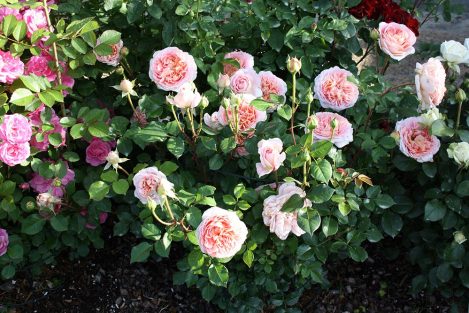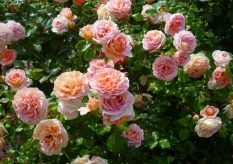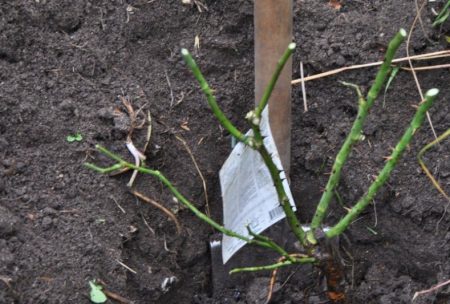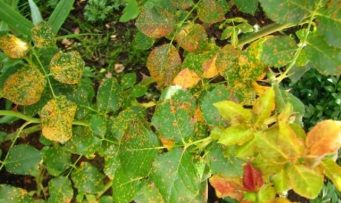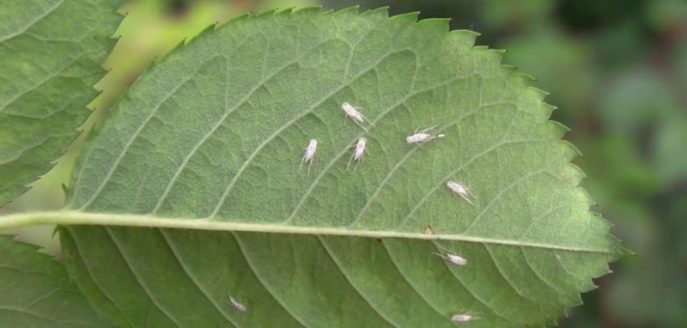Rose "Abraham Derby" perfectly decorates any garden, will become the main design accent in it. Although this queen of flowers is somewhat capricious, even inexperienced lovers are able to cope with its cultivation.
Material Content:
Description of the variety and features of the park rose
For the first time, a park English rose was grown in 1965. “Abraham Derby” is the result of crossing polyanthus and climbing plants. The buds have a pale, pinkish color, turning into yellowish. The presented rose has one feature - depending on weather conditions, its petals are able to change their color to peach.
The bushes are impressive in size and can reach 1.5 meters in height. With good care and proper conditions, the height of the bushes reaches even more than 2 meters.
Since the variety grows quite quickly, it can also be planted as a climbing rose. Terry flowers, reach up to 14 cm in diameter. “Abraham Derby” blooms from the beginning of summer until mid-autumn, which is the main advantage of the species. The flowers have a light lemon flavor.
Soil preparation and proper planting
Unfortunately, the variety is not suitable for cultivation in the middle lane, therefore, in order to achieve lush flowering, simple recommendations should be followed.
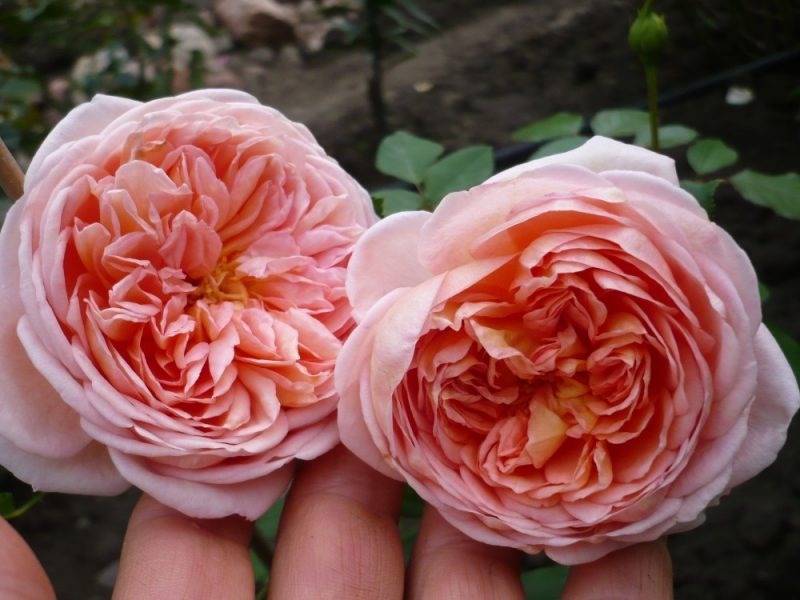 This climbing rose really does not like the shadow, and therefore it is advisable to choose the most sunny area well protected from drafts. You can not plant seedlings in the lowlands, on the flower beds, where other types of roses grew.
This climbing rose really does not like the shadow, and therefore it is advisable to choose the most sunny area well protected from drafts. You can not plant seedlings in the lowlands, on the flower beds, where other types of roses grew.
If we talk about preferences for soil, then the presented variety in this regard is completely unpretentious, and can grow well on any soil.If the ground is sandy, humus should be added to the hole prepared for the rose.
The key to the correct growth of the future beauty is a competent landing.
To do this, you need to choose seedlings not older than 3 years old, which have the greatest frost resistance and strength. When buying, pay attention to the branches and roots, which should be fresh, without signs of disease.
It is interesting:hybrid tea roses
Timing and landing scheme
Rose planting is recommended in two terms - in the fall or in the spring. In the second case, the sapling manages to take root over the summer and gain strength, which will facilitate the work for beginners and beginner gardeners. However, experienced gardeners are advised to plant seedlings in the fall, but in this case it is important to choose a suitable day for weather conditions.
Before planting, the branches are cut to 6 buds, as their large number weakens the plant. The roots are also pruned, removing damaged and too long. So the bush forms a powerful root system.
A pit for planting is dug with a depth of 1.5 bayonets of a shovel, drainage is necessarily placed at the bottom. Chipped red brick is best suited for these purposes. Then a layer of humus is poured into the pit, some sand and peat.
The seedling is placed in the hole, the roots are well spread and gently sprinkled with earth, rammed around the bush and spilled well, ending at this stage planting measures. The soil is mulched with mowed grass or hay.
Be sure to ensure that the root neck is 5-6 cm below the soil level.
The subtleties of growing and caring for flowers
The Abraham Darby rose itself is unpretentious. It can grow almost without the attention of the grower in the southern latitudes. In the middle lane, it is important to learn how to grow this plant correctly.
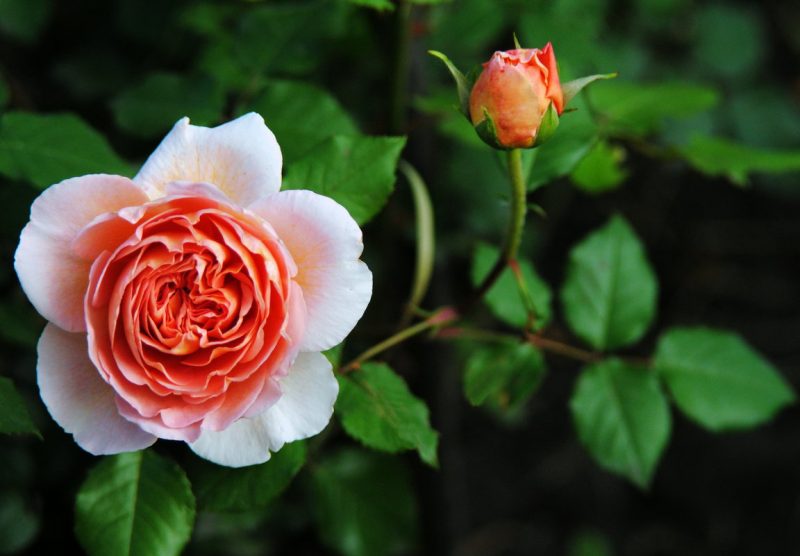 The basis of care is timely watering and fertilizing. The variety does not tolerate excess moisture, but this does not mean that the shrub should be watered very rarely. The lack of water leads to the growth of roots close to the surface of the soil, which weakens the rose and makes it vulnerable.
The basis of care is timely watering and fertilizing. The variety does not tolerate excess moisture, but this does not mean that the shrub should be watered very rarely. The lack of water leads to the growth of roots close to the surface of the soil, which weakens the rose and makes it vulnerable.
Watering is done weekly, spending about a bucket of water under each bush. In early September, soil moisture is reduced, and in the middle of autumn it is completely stopped. Rose bushes are watered under the root, trying to prevent water from falling on the leaves and buds, as this leads to the appearance of diseases.
Top dressing under the bushes begins to make with the arrival of warm spring days. The first time roses are fertilized with compounds in which there is a lot of nitrogen. This substance stimulates the plant to build green mass. It is possible to use even chicken manure, diluted with water in a ratio of 1:20, respectively.
Roses do not tolerate fresh manure, which must be taken into account when feeding a plant. If there is only such a compound of fertilizers, it should be given time to ferment. It is enough to withstand the composition of 10 days.
Then they feed it every two weeks, introducing special nutritional mixtures designed specifically for roses.
Variety "Abraham Derby" must be cut, but this method depends on giving the bush the desired shape. If the rose is grown as a climbing, then it should be pruned only in the spring, removing all diseased and dried shoots.
If you plan to grow a round bush, then you need to create it in the spring, while shortening each shoot. A compact view of the future decoration of the garden can be given if you cut the plant in the spring by 2/3.
It also needs regular weeding and loosening of the soil. It is most convenient to carry out such work after watering or rain the next day.
Diseases, pests and control methods
When growing this variety, flower growers often encounter wilting and the appearance of plaque on different parts of the bush. It would seem that there are no reasons for the occurrence of diseases, because the required agrotechnics of cultivation are observed, but the rose is still “unwell”. How to recognize the cause of "ailments" and cure the plant?
If the leaves are covered with a whitish bloom, then the bush fell ill with powdery mildew. For preventive purposes, in March, shrubs should be treated with copper sulfate. At the first signs of a disease that occurs during the season, the rose must be immediately treated with Topaz.
Roses often suffer from rust. This disease manifests itself in the form of spots with a brown tint, affecting foliage and shoots. To heal a rose, it should be sprayed with Bordeaux fluid.
Another bush can hit the "black spot". If whitish spots that gradually turn black become noticeable on the leaves, they should be treated with El.
Of the pests, the garden pet is most often attacked by aphids, sawfly, thrips. As soon as the "saboteurs" are discovered, the roses immediately need to be doused with a strong stream of water from the hose, and at the end of the "treatment procedure" carefully clean the trunk circle. Then the plant is treated with drugs "Actana", "Spark" or "Commander".
For preventive purposes against insect pests, roses should be sprayed with insecticides in early spring. Such a simple measure will help prevent the development of diseases that spread parasites.
Winter preparations
For the winter, the variety must be insulated. When a steady cooling sets in, shelter is built over the rose bushes. First, the plant is sprinkled with sand or dry grass. The use of straw or peat is excluded, since these materials quickly absorb moisture: the bushes simply mate. Before frosts, too long and thin shoots should be cut. And also in late autumn, remove all the foliage.
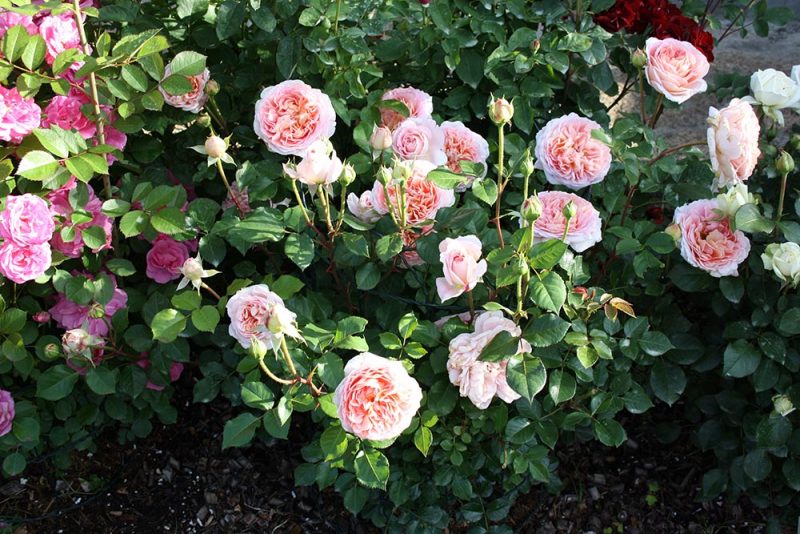 As soon as steady colds come, roses are wrapped in any covering material. You can build a frame of sticks or iron rods, and put on a suitable material.
As soon as steady colds come, roses are wrapped in any covering material. You can build a frame of sticks or iron rods, and put on a suitable material.
The beautiful “Abraham Derby” will certainly become a real decoration of your personal plot. The variety is happy with flowering for a long time, and the buds exude a subtle aroma. Observing a fairly simple agricultural technique, to grow strong and brightly flowering bushes is not particularly difficult.


